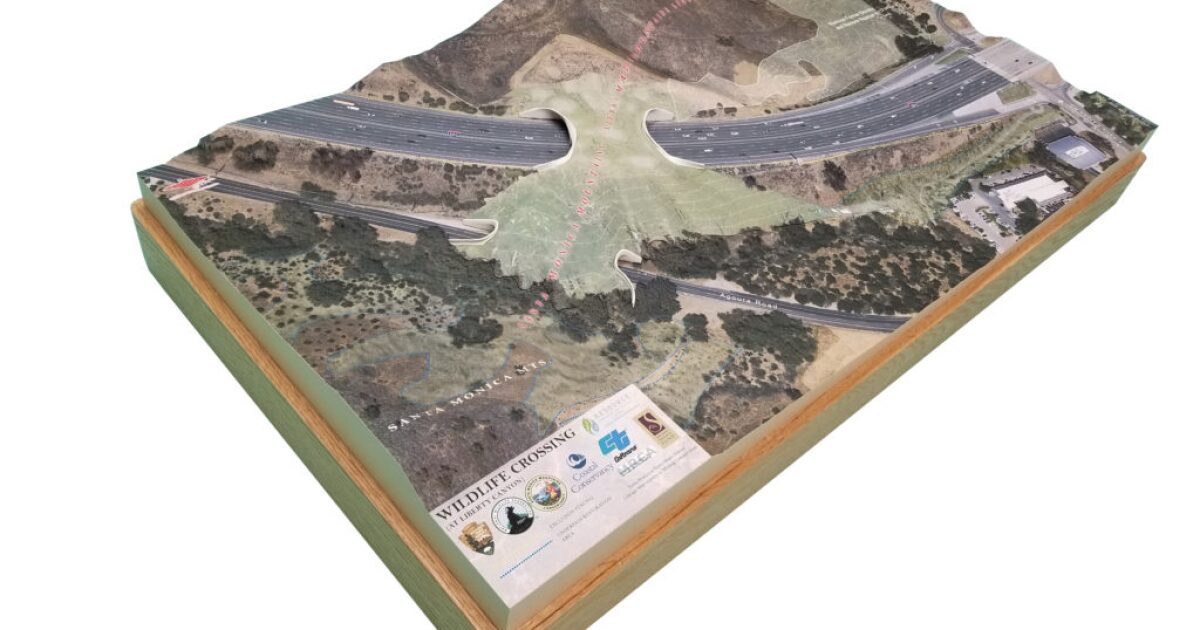Opening is scheduled for next month on what is billed as the world’s largest wildlife crossing: a bridge over a major Southern California highway that will provide more space for cougars and other animals to roam urban sprawl. .
A ceremony marking the start of construction of the stretch over US 101 near Los Angeles will take place on Earth Day, April 22, the National Wildlife Federation announced Thursday.
The bridge will give big cats, coyotes, deer, lizards, snakes and other creatures a safe route to clear space in the Santa Monica Mountains and better access to food and potential mates, said Beth Pratt of the federation of wildlife. wild.
“Crossings like this are nothing new,” Pratt said, noting that there is one outside of Yosemite for toads. “This is historic because we’re putting it on one of the busiest highways in the world.”
He helped organize the project along with other conservationists and state transportation officials.
Pratt said the bridge will be the first of its kind near a major metropolis and the largest in the world, spanning 200 feet (61 meters) over 10 highway lanes and a feeder road just 35 miles (56 kilometers) away. northwest of downtown Los Angeles.
Construction will take place primarily at night and will not require extended closures of the 101 Freeway, officials said. It is scheduled to be completed in early 2025.
The $90 million price tag will be covered by about 60% from private donations, with the rest coming from public funds set aside for conservation purposes. The stretch will be called the Wallis Annenberg Wildlife Crossing, after the philanthropist whose foundation donated $25 million.
RELATED: Important Wildlife Corridors for Southern California, Nation
Governor Gavin Newsom called the project an “inspiring example” of public-private partnership.
“California’s diverse array of native species and ecosystems have earned it state recognition as a global biodiversity hotspot. In the face of extreme weather impacts, it is more important than ever that we work together to protect our rich natural heritage,” Newsom said in a statement Thursday.
The star of the fundraising campaign was the P-22 Cougar. Famous for traveling across two freeways and making a huge Los Angeles park its home, the big cat became a symbol of the diminishing genetic diversity of wild animals that must remain virtually trapped by sprawling development or are at risk of being run over.
Scientists tracking cougars equipped with GPS collars have discovered for decades that the animals are largely constrained by roads in the mountains that stretch along the Malibu coast and through downtown Los Angeles to Griffith Park, where they settled. P-22.
Despite being the face of the project, P-22 is unlikely to use the bridge because it is confined to the park many miles away. But many of his family members could benefit, Pratt said.
Some 300,000 cars a day ply that stretch of the 101 in Agoura Hills, a small town surrounded by a mosaic of protected wilderness areas that the new interchange will connect.
Drivers in the Liberty Canyon area will speed under the 165-foot (50-meter) wide bridge with bushes and trees growing on top, seamlessly bridging the hillsides on either side of the lanes.
The architects designed the topography to be indistinguishable from the landscape on either side. High-edged shoulders and gaps will block sound and light from the lanes below.
Wildlife crossings (bridges and tunnels) are common in Western Europe and Canada. A famous one in Banff National Park in Alberta straddles the Trans-Canada Highway and is frequently used by bears, moose, and moose.
The Los Angeles-area bridge has enjoyed nearly universal support, unusual for a public works project. The draft environmental impact document received nearly 9,000 comments, with only 15 opposing, according to the wildlife federation.
